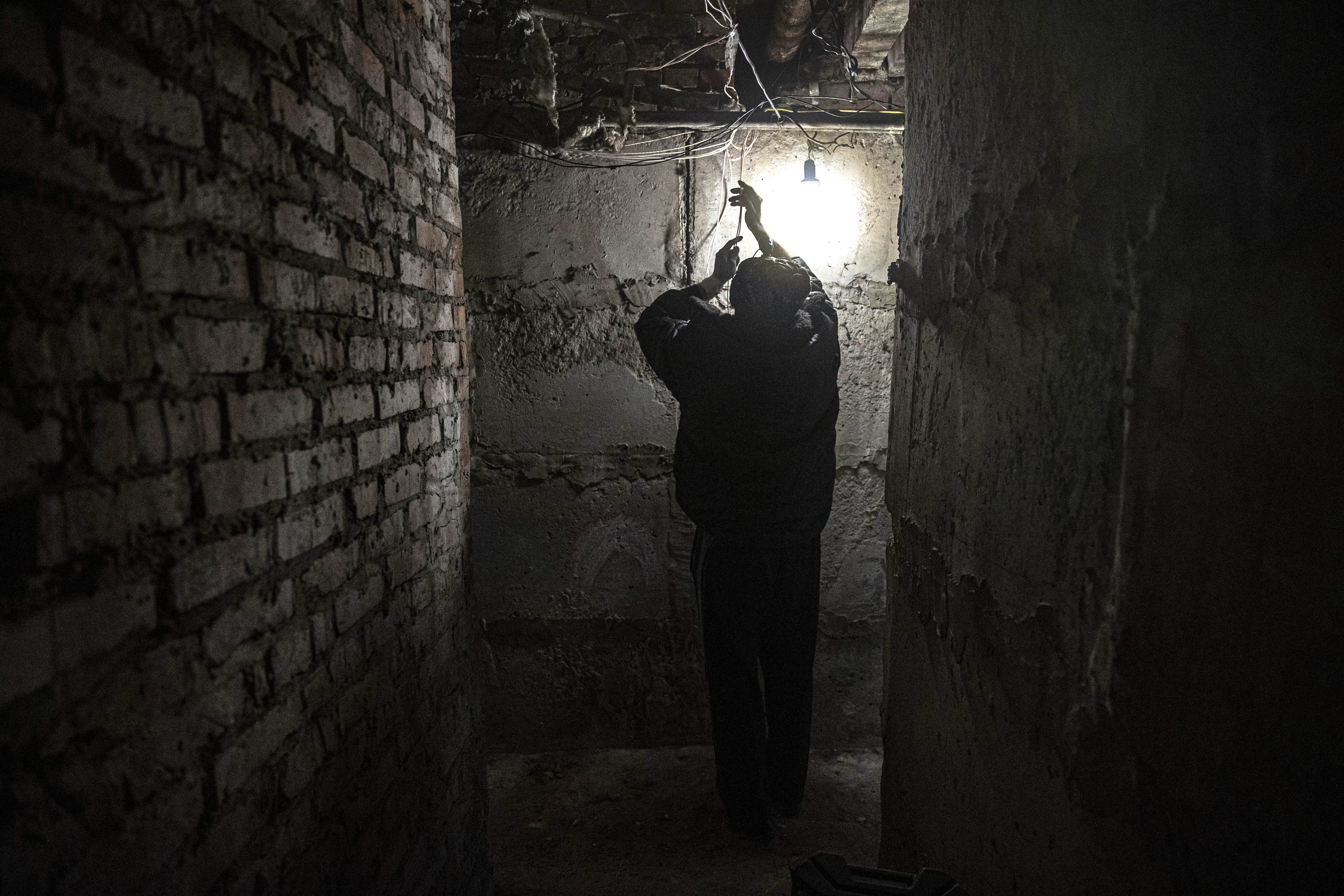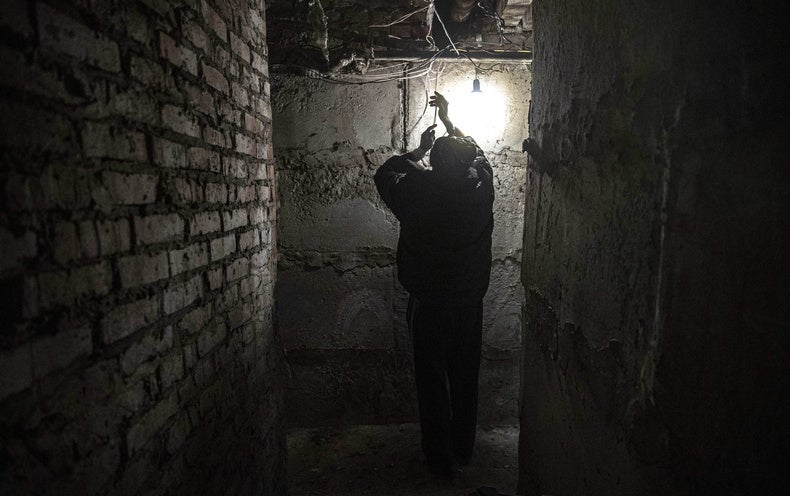
CLIMATEWIRE | It’s not easy to talk about climate change and carbon-free power when your country is a battlefield.
That’s the hard reality environmental advocates and clean energy companies have confronted in Ukraine in the wake of the Russian invasion. But they say renewable energy has nonetheless gained wider public support as a reliable power source amid fighting that has spurred rolling blackouts.
“War, it seems for us, created a new understanding of renewables and maybe also created new possibilities for further development of renewables,” said Artem Semenyshyn, executive director of the Solar Energy Association of Ukraine.
Russia’s war in Ukraine has altered global energy markets, accelerating the green transition in wealthy parts of Europe and forcing poorer countries to fall back on dirtier fuels like coal. In Ukraine — which has coal, gas and nuclear resources — energy that’s close to where it’s needed has become paramount.
Renewables have been valued in the short term for their resilience, with small, distributed systems, like solar panels on the roof of a hospital or a home enabling backup power during a grid failure, said Allegra Dawes, a research associate focused on energy security at the Center for Strategic and International Studies (CSIS).
The war, meanwhile, has emphasized the role renewables can play over the longer term in providing Ukraine with greater energy security and helping it integrate more with the European Union as it works to decarbonize its energy system.
During the signing of a cooperation agreement with the International Energy Agency in December, Ukraine’s Minister of Energy German Galushchenko called the transition to carbon-free energy the “cornerstone” of the nation’s energy sector recovery.
The Feb. 24, 2022, start of the invasion coincided with a test by Ukraine’s national electric utility to disconnect its power supply from grids in Russia and Belarus. That pressured Ukraine’s grid operators to quickly synchronize its grid with Europe’s, say analysts.
The bigger challenge over the past year, however, has come from Russia targeting key parts of Ukraine’s energy infrastructure.
Attacks in recent months on substations critical to energy distribution, coal-fired power plants and other key parts of the grid led to widespread power cuts, leaving millions temporarily without lights, heat or water.
The war has also damaged the country’s renewable-energy ambitions.
Before the invasion, renewables accounted for more than 12 percent of Ukraine’s energy mix and were rapidly expanding. The government was aiming for 25 percent of the country’s energy to come from renewables by 2035. Coal, natural gas and nuclear power account for more than 80 percent of the country’s energy mix, with more than half of all power coming from nuclear generation before the war, according to the IEA.
But the war imposed barriers on building out utility-scale solar, Semenyshyn said. Some renewable facilities have been damaged by fighting, and a lot of the best potential for wind and solar facilities are in the southern and southwestern parts of the country — areas that were or have been under Russian control.
What has changed is how the public views renewable energy.
After fighting broke out, Semenyshyn said there was a dramatic increase in residential demand for small-scale solar with battery storage in areas with few other viable options for electricity.
At the beginning of the invasion when the electricity shut off, some people with residential solar panels allowed neighbors to charge their phones and connect to the internet to read the news about the invasion or send messages to relatives, Semenyshyn said.
Evgeniy Yaremenko, who runs Solar Steelconstruction LLC, which installs solar PV units, said his company began offering their stockpile of solar panels to everyone from soldiers who used them to charge their phones to hospitals struggling to maintain a continuous supply of electricity.
“These times, they changed the perception of the people,” Yaremenko said, noting that his company’s installation capacity is fully booked until the end of the year.
Ukraine’s Solar Association is also working to provide solar and storage systems to hospitals, particularly in cities that were once under Russian occupation. Green groups like Ecoclub, an NGO based in western Ukraine, have also been involved in that effort.
Started by university students more than 20 years ago, Ecoclub has provided support to municipalities to help them build out clean energy. It installed the first power plant owned by a water utility in the city of Voznesensk in 2020. That investment allowed the city to continue to power its pumping station and provide water and sewage services to residents during blackouts after the war started.
“We see these pilots, they are a good signal for local communities to invest more in the direction to develop renewables,” Ecoclub Executive Director Andriy Martynyuk said.
The group has used its international connections to bring some humanitarian aid to Ukraine and is now keeping an eye on reconstruction planning to make sure local governments are prepared to implement green projects.
Semenyshyn said the country needs to promote smart grids and energy systems built around residential solar. Several associations are calling for 50 percent of Ukraine’s electricity production to come from wind, solar and other carbon-free power by 2030.
Like some of the country’s renewable energy companies, Semenyshyn thinks that the war has helped accelerate the transition away from fossil fuels. But he also knows there are threats to the transition by those who might use the war as a way to justify the build out of more natural gas and coal.
“Now, we are in a crossroad,” he said, between reconstruction or restoration of what existed before.
Officials are already promoting green reconstruction efforts. A national recovery plan presented last July calls for spending of around $130 billion over the next 10 years on green energy development. Renewables can reduce the country’s dependence on costly, volatile fossil fuel imports, many argue. But that will depend greatly on outside funding and investment, policy changes, and transparency, say analysts.
The ability to generate electricity that it could then transmit Europe could help the rollout, CSIS’s Dawes said, since it could stimulate needed investment in Ukraine’s transmission network. But the road ahead won’t be easy.
“I think that we underestimated that we have also an energy battlefield — not only the battlefield with weapons, but energy is also a huge battlefield,” Semenyshyn said.
Reprinted from E&E News with permission from POLITICO, LLC. Copyright 2023. E&E News provides essential news for energy and environment professionals.
Stay connected with us on social media platform for instant update click here to join our Twitter, & Facebook
We are now on Telegram. Click here to join our channel (@TechiUpdate) and stay updated with the latest Technology headlines.
For all the latest For News Update Click Here

